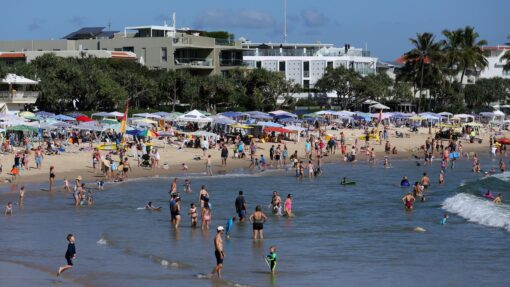Treasurer tips slimmer commodity budget boost in May
Poppy Johnston |

The treasurer says he will again bank revenues from buoyant commodity prices but has tempered expectations of another resources windfall to boost his second budget.
Setting the scene for his May budget, Jim Chalmers played down the likelihood of another commodity price surge, which he expects to be smaller than in October.
“Even though we expect that our revenues will benefit substantially from elevated commodity prices and low unemployment, the boost … to this budget in May is unlikely to be as big as it was in October,” he told the Business Council of Australia audience at a closed event in Canberra.
In the October budget, the government opted to bank 99 per cent of the revenue boost from high commodity prices as a budget repair measure.
As part of an ongoing commitment to budget restraint, Dr Chalmers said most commodity-driven upwards revisions would be returned to the budget bottom line.
He also said Treasury was investigating the typically conservative price assumptions for commodities ahead of the next budget, noting he supported the case for “credible but still conservative” estimates.
While commodity prices are looking more subdued than expected, migration is coming back stronger than anticipated.
Treasury now expects net overseas migration in the mid-300,000s or more in this financial year, which is more than the 235,000 in the October budget.
Despite the uplift, Dr Chalmers said migration levels were still falling short of pre-pandemic expectations.
“And that’s why it will still take time to fill the gaps and the skills shortages that you’re all familiar with and we’ve talked about on multiple occasions,” he said.
He said financial instability overseas – and the uncertainty rippling through markets since the bank collapses – were also playing out ahead of the May budget, as was the downward trajectory for inflation.
Against this backdrop, he said the budget would do “heavy lifting” in eight areas:
* Responsible cost of living relief
* Investing in growth and productivity on the supply side
* Funding national security priorities, including AUKUS
* Strengthening the care economy and essential services
* Breaking down barriers to women participating in the workforce
* Targeting entrenched inequality “including a focus on place-based initiatives that expand economic inclusion”
* Ongoing funding to key programs, such as the My Health Record, that had “time-limited” funding under the coalition government
* Budget restraint, including banking upward revisions from high commodity prices.
The budget will also be delivered at a time of shrinking household wealth, with Australian Bureau of Statistics data showing total household wealth sank by another 0.4 per cent – about $57 billion – in the December quarter, marking a third consecutive quarter of decline.
Rising interest rates limited the amount buyers could borrow and weighed on demand, pushing down residential property values, the bureau said.
A stronger quarter for superannuation kept a floor under the household wealth decline, with domestic and international share markets rallying after heavy losses in previous quarters.
AAP


